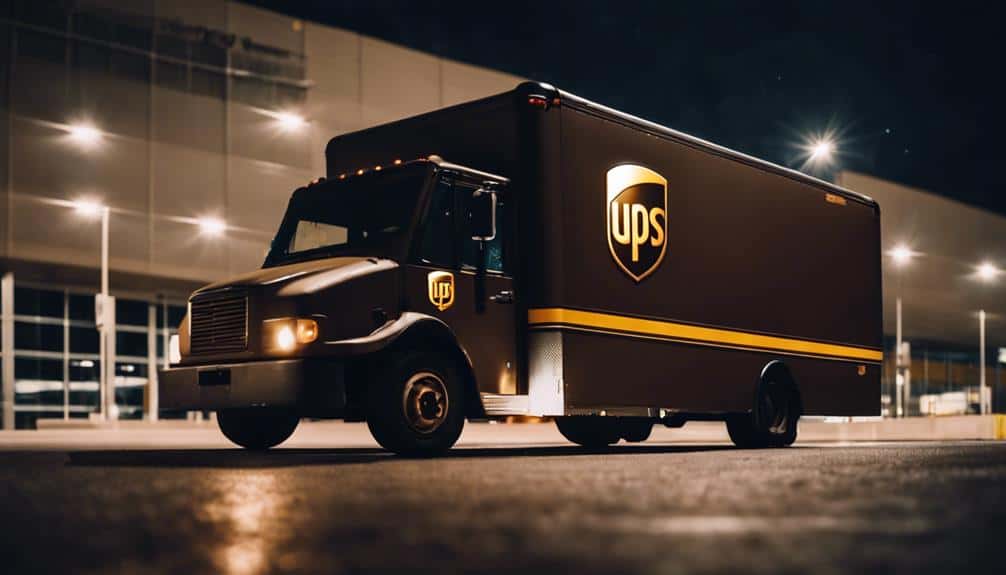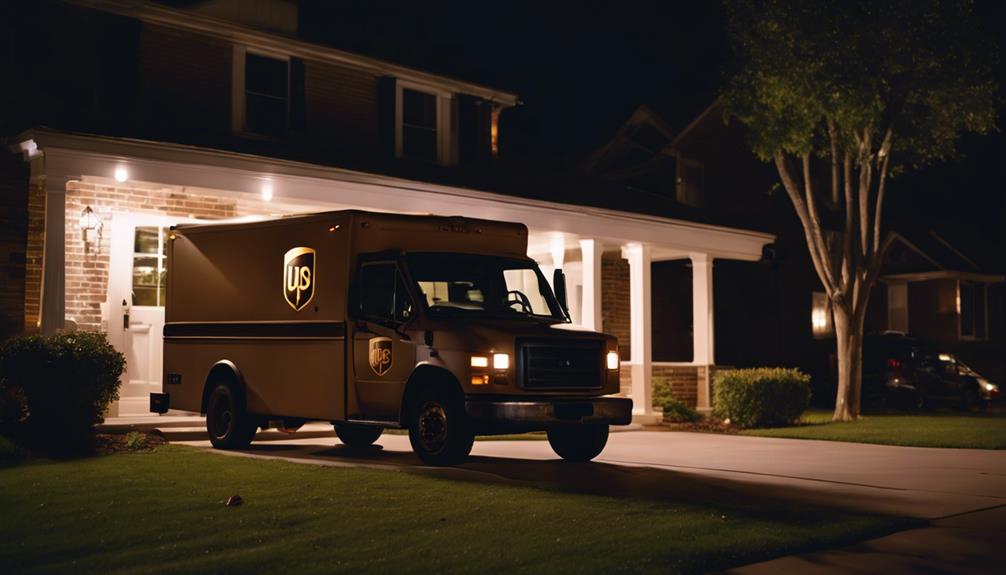Flight delays can disrupt UPS delivery schedules due to delayed package processing and sorting caused by late arrivals. These delays can stem from adverse weather, mechanical issues, or logistical challenges. Depending on the severity, delays can range from minutes to potentially extending delivery dates by one to three days. To mitigate these issues, customers should actively track their shipments, contact UPS customer support for urgent cases, and consider signing up for UPS My Choice alerts. Taking proactive steps can help guarantee timely receipt of packages during unexpected delays.
Key Takeaways
- Monitor tracking for updates on delayed UPS packages.
- Contact UPS customer support for urgent shipments.
- Consider rerouting critical packages through alternate hubs.
- Sign up for UPS My Choice alerts for timely notifications.
Impact of Late Flight on Deliveries

The delay of a late flight can considerably impact the delivery schedule and processing of UPS packages, necessitating adjustments to guarantee timely distribution to recipients.
Late flight statuses lead to delayed package processing, causing the arrival of planes carrying packages past scheduled times. This delay results in adjustments to delivery plans and pushes back sorting and forwarding processes by hours or even until the next day.
Despite these challenges, minor and temporary impacts on delivery timelines are expected in most cases.
To alleviate the effects of late flights, UPS employs efficient package tracking systems and delivery notifications to keep recipients informed and assure successful distribution despite unforeseen delays.
Causes of UPS Flight Delays
Impactful factors, such as adverse weather conditions and mechanical problems, contribute greatly to delays in UPS flights.
Adverse weather, including storms and high winds, poses risks to flight safety, leading to cancellations or delays. Mechanical issues such as plane malfunctions can hinder timely departures.
Logistical challenges like air traffic control problems and crew constraints also play a role in flight delays. Ensuring flight safety is paramount, sometimes necessitating grounding an aircraft until issues are resolved.
UPS faces the task of managing these variables to maintain efficient operations while prioritizing safety. By addressing these causes proactively, UPS aims to minimize disruptions in its delivery network, offering reliable services despite the challenges posed by these factors.
Duration and Timing of Delays

Understanding the varying lengths of delays in UPS flights requires consideration of multiple factors beyond just the initial cause. Delays can range from minutes to several hours, impacting package tracking and delivery notifications.
Factors such as the time of day and the operating hours of sorting facilities play an essential role in determining the duration of delays. Additionally, the specific package route and proximity to the final destination can influence the delay period.
In cases where delays exceed 24 hours, UPS's expedited services aim to guarantee delivery within one business day. Monitoring package tracking and signing up for delivery alerts through UPS My Choice can help customers stay informed and take necessary actions promptly.
Possibility of Extended Delivery Dates
Extended delivery dates may become a reality for UPS packages in cases of severe delays beyond the expected timeframe. While UPS aims to adhere to delivery expectations, significant delays could lead to packages being delivered on the next possible business day or held for delivery within 1-3 days.
In rare instances of critical shipments, rerouting through alternate hubs might be necessary. However, UPS's robust logistics network typically minimizes the occurrence of severe delays lasting over 1-2 days.
Customers should remain vigilant in monitoring their tracking information and consider contacting UPS for rerouting options or the shipper for further assistance if delays persist beyond the standard timeframe.
UPS My Choice delivery alerts can also be a valuable tool for staying informed about any extended delivery dates.
Actions for Delayed Packages

When faced with delayed packages from UPS, customers should prioritize frequent tracking updates through UPS's online tracking system.
By actively monitoring package tracking, customers can stay informed about the status of their delayed shipments and any potential changes in delivery timelines.
In cases of extended delays or urgent shipments, reaching out to UPS customer support for assistance and possible rerouting options is advisable.
Customer support can provide valuable guidance on the next steps to take based on individual circumstances.
Additionally, signing up for UPS My Choice delivery alerts can help customers receive timely notifications about their delayed packages, enabling them to plan accordingly.
Taking proactive steps and staying informed through package tracking and customer support can help mitigate the impact of delayed UPS deliveries.
Conclusion
In summary, late flight delays can greatly impact UPS deliveries, leading to logistical challenges for both shippers and recipients.
By understanding the causes, duration, and potential outcomes of these delays, individuals can take proactive steps to mitigate their impact.
Monitoring tracking updates, exploring reroute options, and engaging with UPS support services are essential strategies to navigate the challenges posed by late flight delays effectively.
By being informed and prepared, recipients can guarantee a smoother delivery experience despite potential setbacks.

Oliver Postman was born and raised in a small town in the Midwest, where his fascination with postage began at an early age. At just six years old, he stumbled upon a box of old stamps in his grandfather’s attic, igniting a passion that would shape his life.

